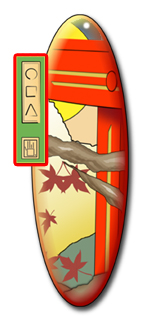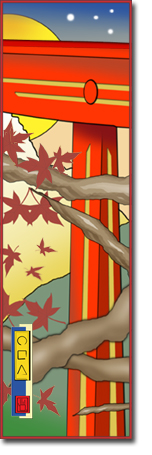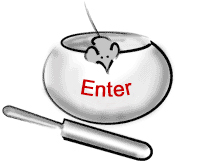On The Way: The Daily Zen Journal
No End to Practice
Soko Morinaga (1925-1995)
Even for those who follow a monastic lifestyle, it is never easy to extricate ourselves from the acquired customs that we have hauled along with us for as long as we can remember. We go along relying on self-chosen value judgments, discriminating on the basis of forms we see with our eyes, distinguishing by the sounds we hear with our ears, differentiating according to the smells we pick up with our noses.
We discern tastes with our tongues, form fancies by what we feel on our skin, hold prejudiced notions in our consciousness. We compare and contrast everything we encounter. It was not a simple thing for me to emerge from this habitual kind of functioning of the mind and to purely and directly experience self and other as one.

In order to instantly apprehend situations, a phenomenon for which the philosophical term is “pure existence,” I had to pass through the fear of death. I must confess that until I first experienced this in the monastery, life was nothing but continuous physical and spiritual anguish.
Let me relate something very idiotic that occurred on begging rounds one day during the period, when, asleep or awake, my koan was never out of my head and my only thought was “I want enlightenment…I want enlightenment…” Unaware of what was ahead of me or behind me, I banged into something; I had run right into a cow’s behind!
At just the instant that I realized I had hit the cow’s rump, aside from mighty astonishment, the first thing that crossed my mind was, “Oh! This is enlightenment!”
The most stubborn of spectators is always right within oneself, always assessing and judging one’s own condition. Even when one has reached the extreme of utter exhaustion, the guardian that discriminates and cannot forget this thing called “self” gets busy whispering all sorts of petty information.
In my own case, governed by the tiny knowledge and experience that I had accumulated, the guardian voice would whisper this most unwarranted warning: “If you go on like this, you might die. You’d better stop here.”
Doing zazen and still more zazen, I chalked up nothing but distress and fatigue; both my head and my body began to lose their normal functioning. The thought that I would surely meet my death if I continued in this vein arose many times to interrupt my practice. But to give the conclusion before the explanation, I can tell you that matters most definitely did not take the turn that I feared. The extremes of fatigue and anguish did not give way to death, but evolved, quite contrary to expectations, into a curve that led right back to where I had started out.
One night I say, in the middle of the night, a lump of fatigue sitting on a zazen cushion, both head and consciousness were in a haze, and I could not have roused the desire of satori if I had wanted to when, suddenly, the fog cleared and a world of lucidity opened itself. Clearly seeing, clearly hearing, it was yet a world in which there was no “me.”
I cannot fully explain that time. To venture an explanation would be to err somewhere. The one thing I am sure of is that in this instance, the functioning of the heart with which I was born came into play in its purest form. I could not keep still in my uncontainable joy. Without waiting for the morning wake-up bell, I made an unprecedented call on the roshi and received permission to leave the temple for about two hours to deliver the news of my experience to Zuigan Roshi.
It did not take me an hour to walk through the black darkness to Daishuin. When I arrived Roshi was still in bed. I crawled right up to his pillow and said very simply, “I finally saw.”
Roshi sprang from this bed, examined me for a time, as if with a glare, and said, “It’s from now on. From now on. Sit strongly.”
This is all he said to me. From then on for the next sixteen years, until my fortieth year and Zuigan Roshi’s death at age eighty-seven, whether in the monastery or back in the temple, I continued koan practice. No, really, I must say that I continue still. It is not just a matter of the Zen koan, but the living koan of human life that continues without limit.
Awakening to your original face–“enlightenment”– does not mean being able to explain yourself or knowing the source of yourself. Enlightenment is liberation from the dross of learning and experience, that, without one’s being aware of it, has accumulated and settled like so much sediment, or like cholesterol into one’s arteries.
It is the vivid, lively manifestation of the heart with which one is born—the heart that is no-form, no-mind, non-abiding, attached neither to form nor to thought, but in dynamic motion. Consequently, enlightenment is not an end point, but rather a starting point.
*
I have gone on at great length about life in a Zen monastery, a subject that may seem totally unrelated to your own lives. Yet all people, regardless of how their lives are structured, hold themselves dear. Everyone wants to be happy. And enlightenment is the starting point of happiness.
We can use the words “true self-confidence” in place of “enlightenment.” Confidence in the true self is a necessary requisite to happiness.
The power in which you can come to believe in yourself is not gained through training. It is the great power that transcends the self, that gives life to the self. The purpose of Zen practice is to awaken to the original power of which you have lost sight, not to gain some sort of new power.
When you have sought and sought and finally exhausted all seeking, you become aware of that with which have been, from the beginning—before ever beginning to search—abundantly blessed. After you have ceaselessly knocked and knocked, you realize that the door was standing wide open even before you ever started pounding away. This is what practice is all about.
Not only in places especially set up for training, but anytime and anywhere, the person who exerts himself or herself with dignity, without worrying about results and without giving in to disappointment, is a true practitioner, a true person of the Way. I believe that just this is the form of true human well-being.
Soko Morinaga (1925-1995)





Such openness! Such a “no one special” approach to sharing the most important moments of one’s life, makes this a most charming chapter from the volume of this master’s journey to freedom. Being closer to our own time, the language is easy to fall into step with and grasp.
Down to earth and with nothing to hide, Soko Morinaga includes us in his aspirations and gives a very encouraging glimpse into a life of practice.
Each time we read these pieces there is always a phrase or two that jumps out at us; for me this time it is “the living koan of human life that continues without limit.” This brings practice front and center into each of our daily lives. Life naturally offers recurring themes that bring us back to fundamental questions. We truly are sitting in the lap of the Universe….
Breaking through our own life koans can be just as awesome as sitting with a koan from someone else’s journey. After all, the traditional koans were spontaneous, in-the-moment encounters with a Zen master and a student. How can someone else’s koan have the same impact? For many of us life itself is our Zen master, and we, naturally, are the students.
And just like an encounter with a Zen master, life can pull the rug out from under our feet also. Keep it all genuine, grounded, and real; the last person we want to fool is ourselves, and it can be so easy to do…
Holding open the door,
Elana, Scribe for Daily Zen